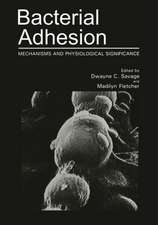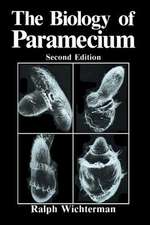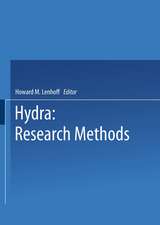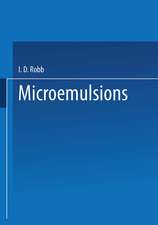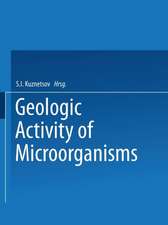The Influenza Viruses: The Viruses
Editat de Robert M. Krugen Limba Engleză Paperback – 8 oct 2011
Din seria The Viruses
- 5%
 Preț: 1420.49 lei
Preț: 1420.49 lei - 5%
 Preț: 1118.94 lei
Preț: 1118.94 lei - 5%
 Preț: 1432.17 lei
Preț: 1432.17 lei - 5%
 Preț: 1434.39 lei
Preț: 1434.39 lei - 18%
 Preț: 960.61 lei
Preț: 960.61 lei - 5%
 Preț: 2136.60 lei
Preț: 2136.60 lei - 5%
 Preț: 379.53 lei
Preț: 379.53 lei - 5%
 Preț: 394.52 lei
Preț: 394.52 lei -
 Preț: 400.26 lei
Preț: 400.26 lei - 5%
 Preț: 384.08 lei
Preț: 384.08 lei - 15%
 Preț: 653.14 lei
Preț: 653.14 lei - 5%
 Preț: 742.04 lei
Preț: 742.04 lei - 5%
 Preț: 378.24 lei
Preț: 378.24 lei - 5%
 Preț: 381.91 lei
Preț: 381.91 lei -
 Preț: 391.61 lei
Preț: 391.61 lei - 5%
 Preț: 724.50 lei
Preț: 724.50 lei - 5%
 Preț: 384.80 lei
Preț: 384.80 lei - 5%
 Preț: 371.66 lei
Preț: 371.66 lei - 5%
 Preț: 383.20 lei
Preț: 383.20 lei -
 Preț: 392.60 lei
Preț: 392.60 lei - 5%
 Preț: 741.51 lei
Preț: 741.51 lei - 5%
 Preț: 391.21 lei
Preț: 391.21 lei - 15%
 Preț: 653.00 lei
Preț: 653.00 lei - 5%
 Preț: 726.15 lei
Preț: 726.15 lei
Preț: 853.78 lei
Preț vechi: 898.72 lei
-5% Nou
Puncte Express: 1281
Preț estimativ în valută:
163.39€ • 169.95$ • 134.89£
163.39€ • 169.95$ • 134.89£
Carte tipărită la comandă
Livrare economică 14-28 aprilie
Preluare comenzi: 021 569.72.76
Specificații
ISBN-13: 9781461280941
ISBN-10: 146128094X
Pagini: 452
Ilustrații: 450 p.
Dimensiuni: 170 x 244 x 24 mm
Greutate: 0.71 kg
Ediția:Softcover reprint of the original 1st ed. 1989
Editura: Springer Us
Colecția Springer
Seria The Viruses
Locul publicării:New York, NY, United States
ISBN-10: 146128094X
Pagini: 452
Ilustrații: 450 p.
Dimensiuni: 170 x 244 x 24 mm
Greutate: 0.71 kg
Ediția:Softcover reprint of the original 1st ed. 1989
Editura: Springer Us
Colecția Springer
Seria The Viruses
Locul publicării:New York, NY, United States
Public țintă
ResearchCuprins
1 Genes and Proteins of the Influenza Viruses.- I. Introduction.- II. RNA Segments 1, 2, and 3: The Three Polymerase-Associated Proteins Form a Complex to Transcribe RNA.- III. RNA Segment 4: Synthesis, Structure, and Function of the Hemagglutinin.- IV. RNA Segment 5: The Nucleocapsid Protein Forms the Structural Monomer Unit of the Ribonucleoprotein Particles.- V. RNA Segment 6: The Neuraminidase.- VI. RNA Segment 7 of Influenza A Virus: Structure and Synthesis of the Membrane Protein (M1) and an Integral Membrane Protein (M2) from Unspliced and Spliced mRNAs.- VII. Influenza A Virus RNA Segment 8: Unspliced and Spliced mRNAs Encode Nonstructural Proteins NS1 and NS2.- References.- 2 Expression and Replication of the Influenza Virus Genome.- I. Introduction.- II. Viral mRNA Synthesis.- III. Template RNA Synthesis.- IV. Virion RNA Synthesis.- V. Regulation of Viral Gene Expression in Infected Cells.- VI. Interferon-Induced Mx Protein, a Specific Inhibitor of Influenza Virus Replication.- VII. Regulated Splicing of the Viral NS1 and M1 mRNAs.- VIII. Mechanisms for the Selective and Efficient Translation of Influenza Virus mRNAs.- References.- 3 Structure, Function, and Antigenicity of the Hemagglutinin of Influenza Virus.- I. Introduction.- II. Structure of Hemagglutinin.- III. Antigenic Variation.- IV. Receptor Binding.- V. Fusion Properties of Hemagglutinin.- VI. Conclusions.- References.- 4 Neuraminidase: Enzyme and Antigen.- I. Introduction.- II. Protein Structure.- III. Antigenic Structure.- IV. Summary.- References.- 5 Membrane Insertion and Intracellular Transport of Influenza Virus Glycoproteins.- I. Introduction.- II. Entry of Influenza Glycoproteins into the Exocytic Pathway.- III. Protein Transport between the Endoplasmic Reticulum and the Golgi Apparatus.- IV. Transport and Processing within the Golgi Apparatus.- V. The Trans-Reticular Network.- VI. Transport to the Cell Surface and Insertion into the Plasma Membrane.- VII. Summary and Perspectives.- References.- 6 Structure of Defective-Interfering RNAs of Influenza Viruses and Their Role in Interference.- I. Introduction.- II. Nature of the DI Particle Genome.- III. Generation of Influenza Virus Subgenomic/DI RNA.- IV. Evolution of DI RNAs.- V. Replication, Transcription, and Translation of DI RNAs.- VI. Mechanism of Interference.- VII. Possible Role of Influenza DI Particles in Modulating Viral Pathogenesis.- VIII. Possible Role of DI Particles in Virus Evolution.- IX. Summary and Conclusion.- References.- 7 Variation in Influenza Virus Genes: Epidemiological, Pathogenic, and Evolutionary Consequences.- I. Introduction.- II. Influenza Viruses in Humans.- III. Homology of Influenza A, B, and C Viruses.- IV. Variation in Influenza A Viruses.- V. Variation in Influenza C Viruses.- VI. Variation in Influenza B Viruses.- VII. Genetic Basis of Pathogenicity.- VIII. Comparison of Variation among Different RNA Viruses.- References.- 8 Specificity and Function of T Lymphocytes Induced by Influenza A Viruses.- I. Introduction.- II. General Properties of Antiviral T-Lymphocyte Responses.- III. Specificity and Function of Anti-influenza Virus TH.- IV. Specificity and Function of Anti-influenza Virus TC.- V. Conclusions.- References.



